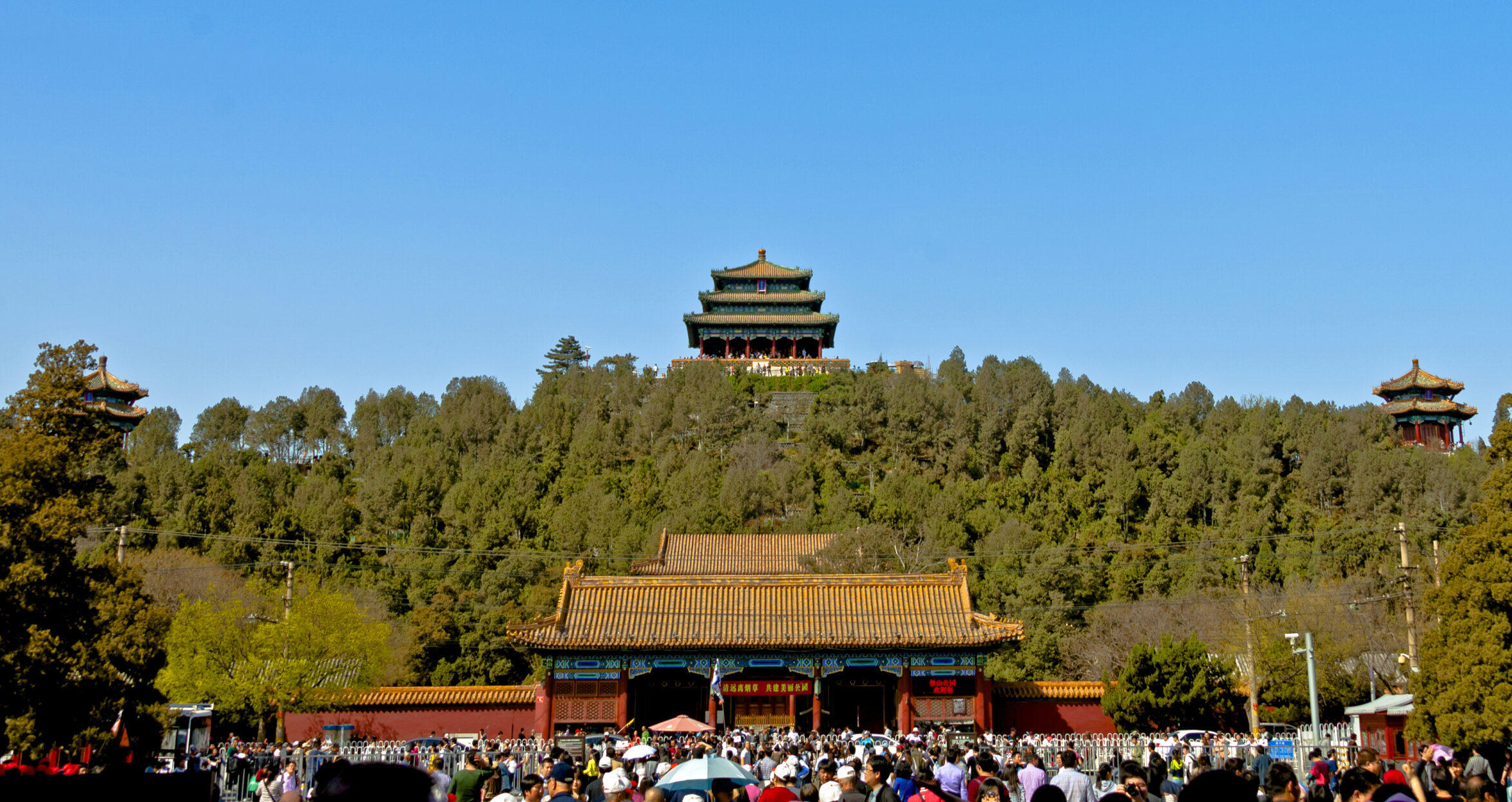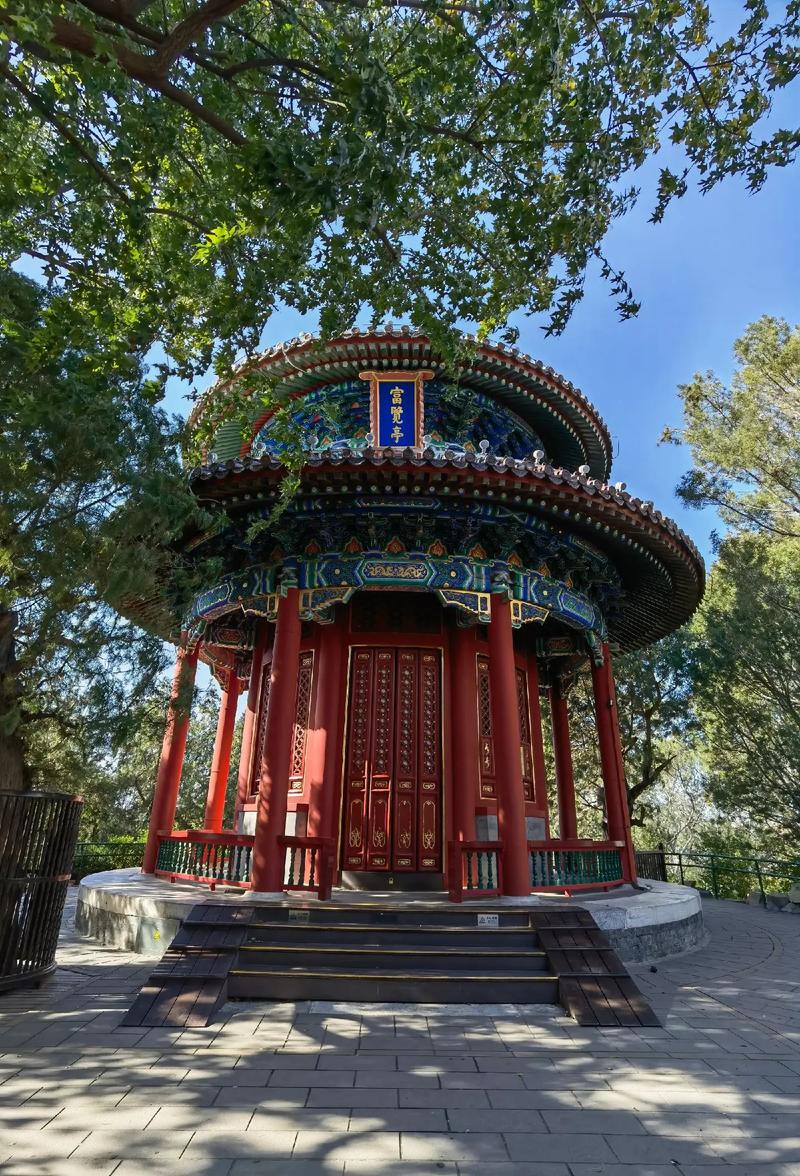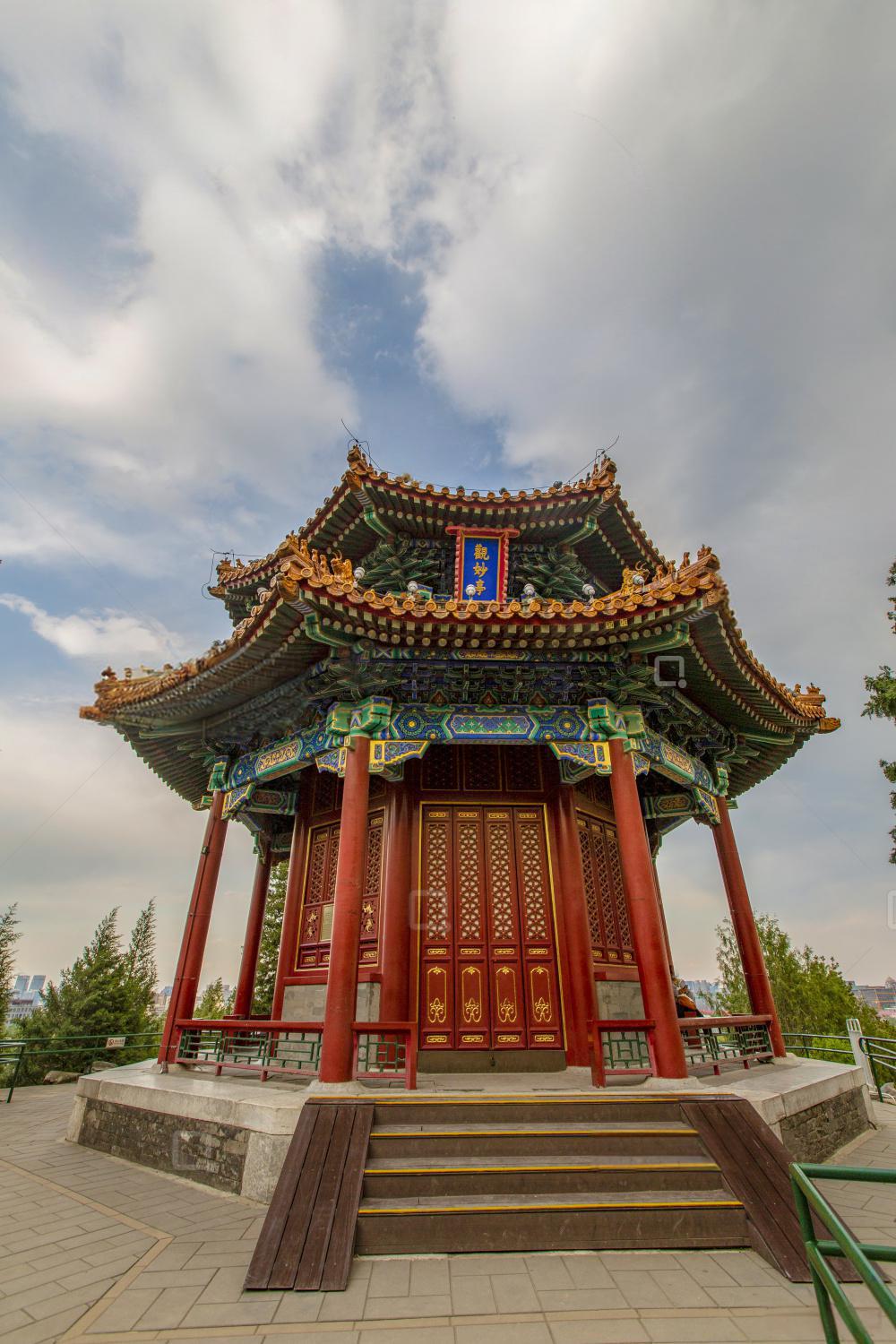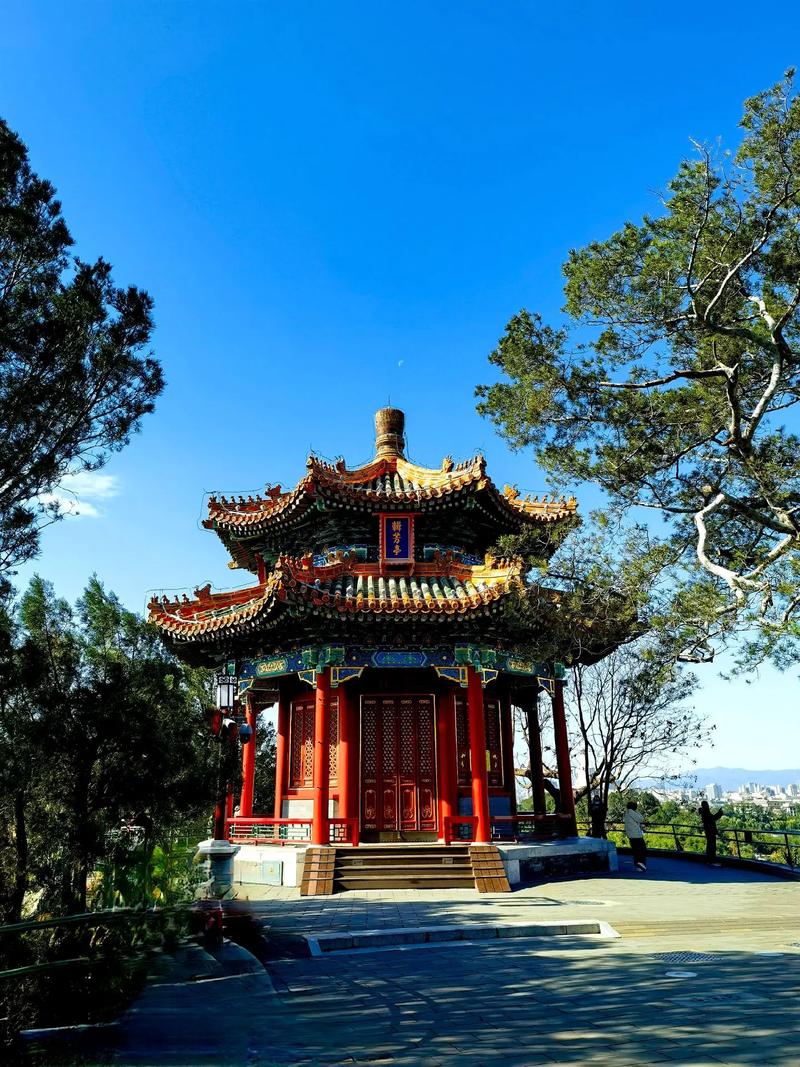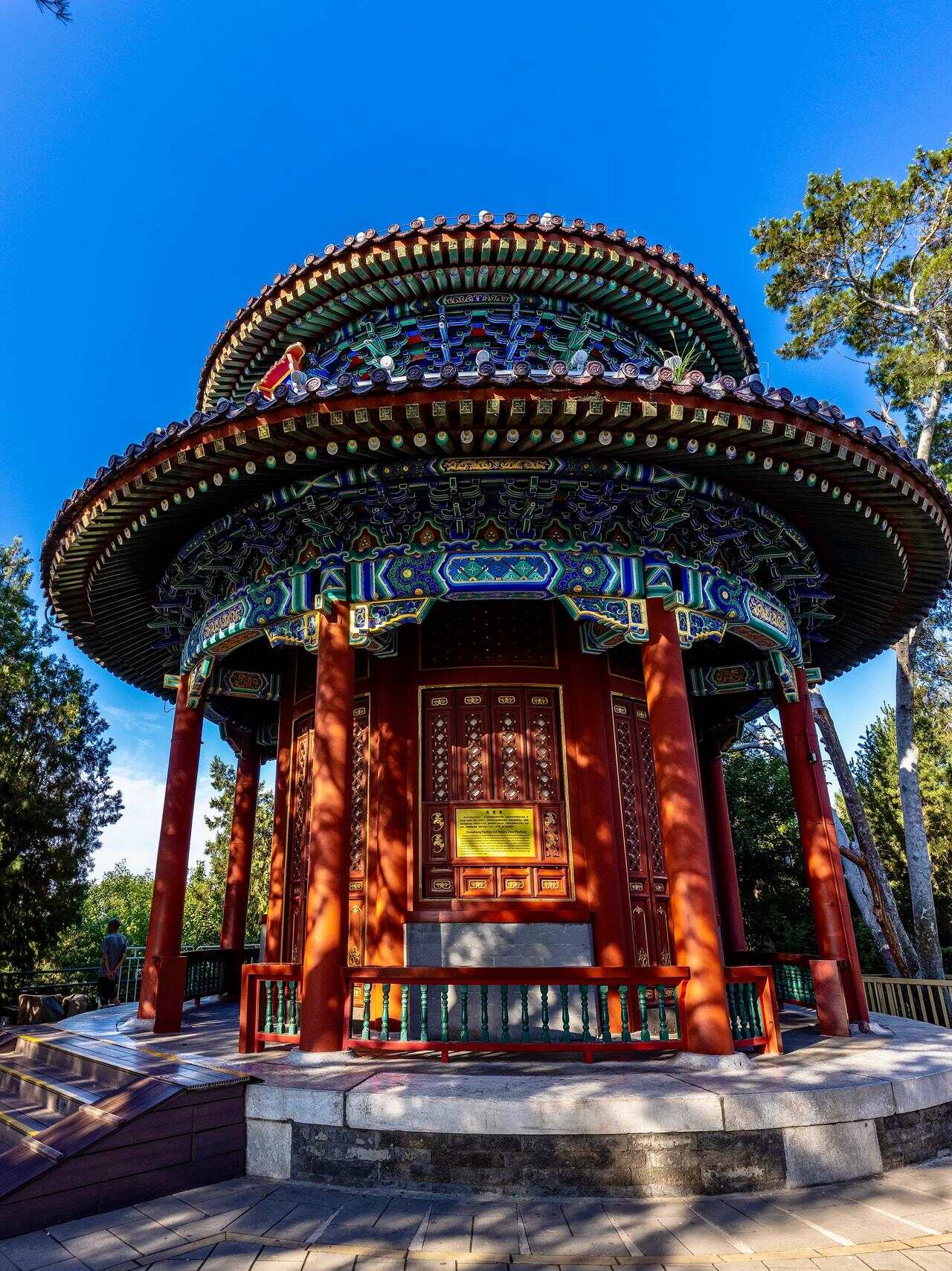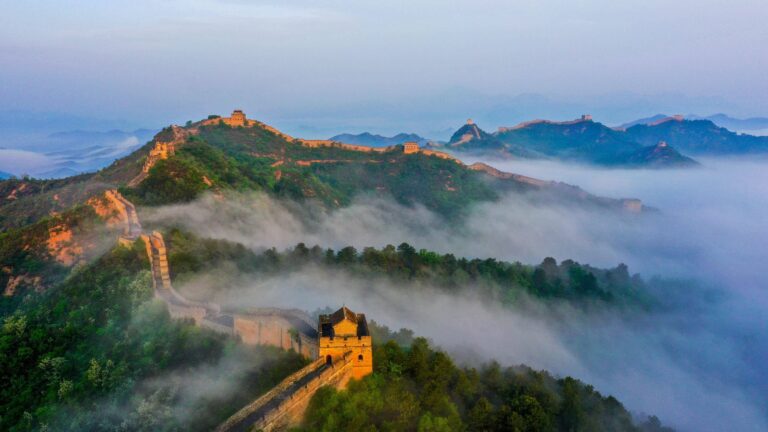Jingshan Park: An Insider’s Guide to Beijing’s Best View
Of all the grand sights in Beijing, a simple hill offers the most profound view. We’re talking about Jingshan Park. It’s a place our guides at Travel China With Me visit constantly. Yet, the panoramic view of the Forbidden City never gets old. It’s the perfect final chapter to a day spent in imperial China.
Many travelers see it as just a park. We see it as an essential experience. It’s where history, nature, and daily life in Beijing all come together. From this guide, you will learn everything you need to know. We will share our insider tips. We want you to experience Jingshan Park like a seasoned traveler. This guide is built on years of our team’s firsthand experience.
Quick Facts
Chinese Name: 景山公园 (Jǐngshān Gōngyuán)
Best For: The iconic panoramic view of the Forbidden City, photography, local culture.
Ticket Price: Regular: ¥2 RMB.
During special events (like the Peony Festival): ¥10 RMB.
Opening Hours: April-Oct: 6:00 AM – 9:00 PM (Last entry 8:30 PM).
Nov-March: 6:30 AM – 8:00 PM (Last entry 7:30 PM).
Recommended Time: 1.5 to 2 hours.
Main Attraction: Wanchun Pavilion (万春亭) at the top of the hill.
Location: 44 Jingshan West Street, Xicheng District, Beijing. Directly north of the Forbidden City.
Table of Contents
A View from the Top: Why Jingshan Park is a Must-Visit
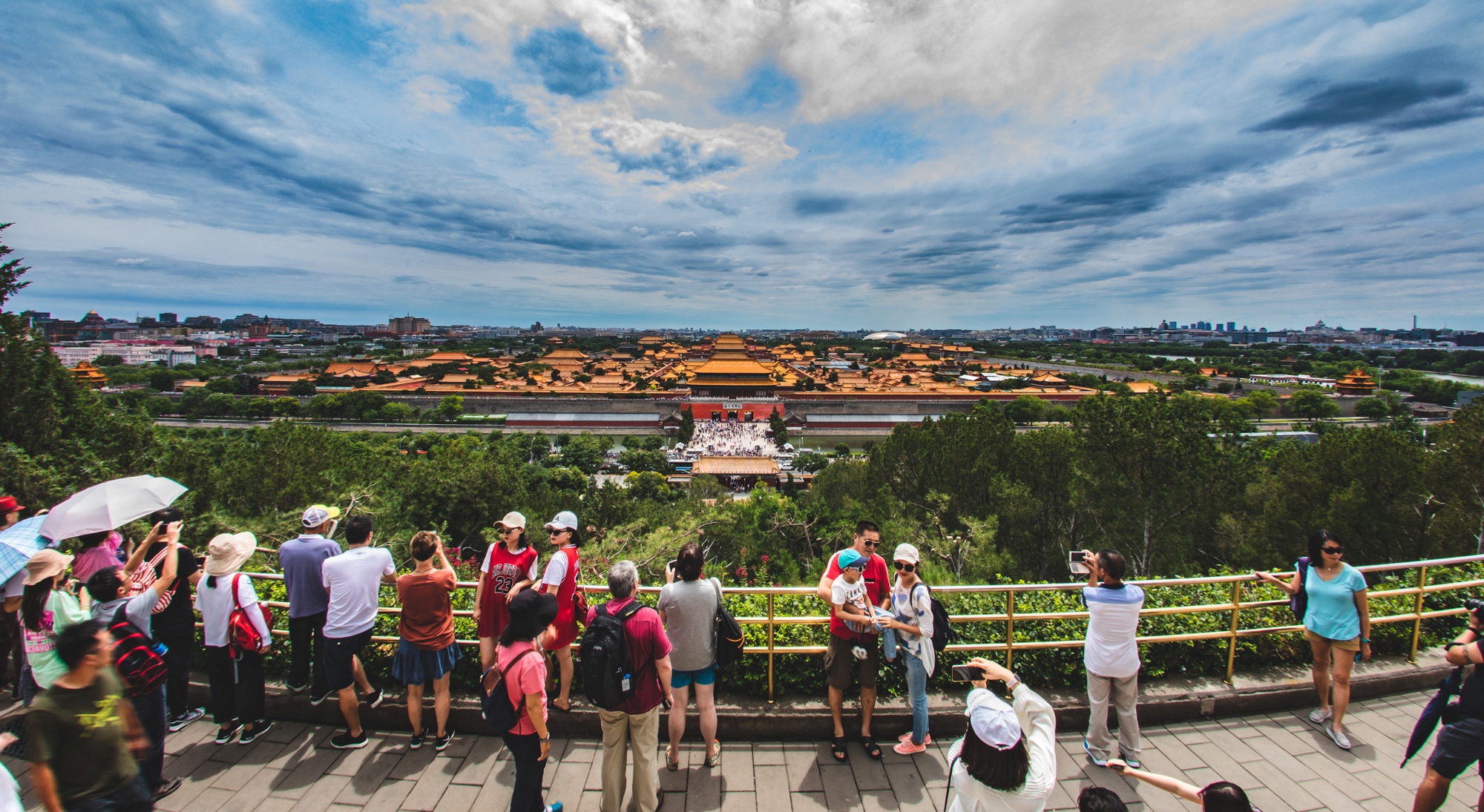
Why do we insist that Jingshan Park is a non-negotiable part of any Beijing itinerary? It’s simple. The park offers an unparalleled return on investment. For a tiny entrance fee and a short climb, you get one of the most magnificent views in all of China.
The Perfect Forbidden City Finale
You spend hours walking through the Forbidden City. You marvel at its vast courtyards and intricate halls. But you can’t truly grasp its immense scale from within. Jingshan Park solves this. After you exit the palace’s north gate, you cross the street and ascend the hill. From the top, the entire palace complex unfolds beneath you. You see the golden roofs stretching out like a glittering sea. It puts everything you just saw into a breathtaking perspective.
More Than Just a View
Jingshan Park is not just a viewpoint. It’s a living, breathing part of Beijing. In the morning, you will hear local choirs singing revolutionary songs. You will see groups practicing tai chi with graceful movements. People fly kites, practice calligraphy on the pavement with water, and play traditional instruments. It’s a window into the daily life of Beijing residents. This cultural immersion is a priceless experience.
Our Unwavering Recommendation
At Travel China With Me, our goal is to create unforgettable moments. We have guided thousands of travelers through Beijing. We can say with certainty that the moment they reach the top of Jingshan Park is always a highlight. The gasp of awe is universal. It’s the photo everyone wants. And it’s the memory that truly captures the grandeur of Imperial Beijing.
Echoes of an Empire: The History and Legends of Jingshan Park
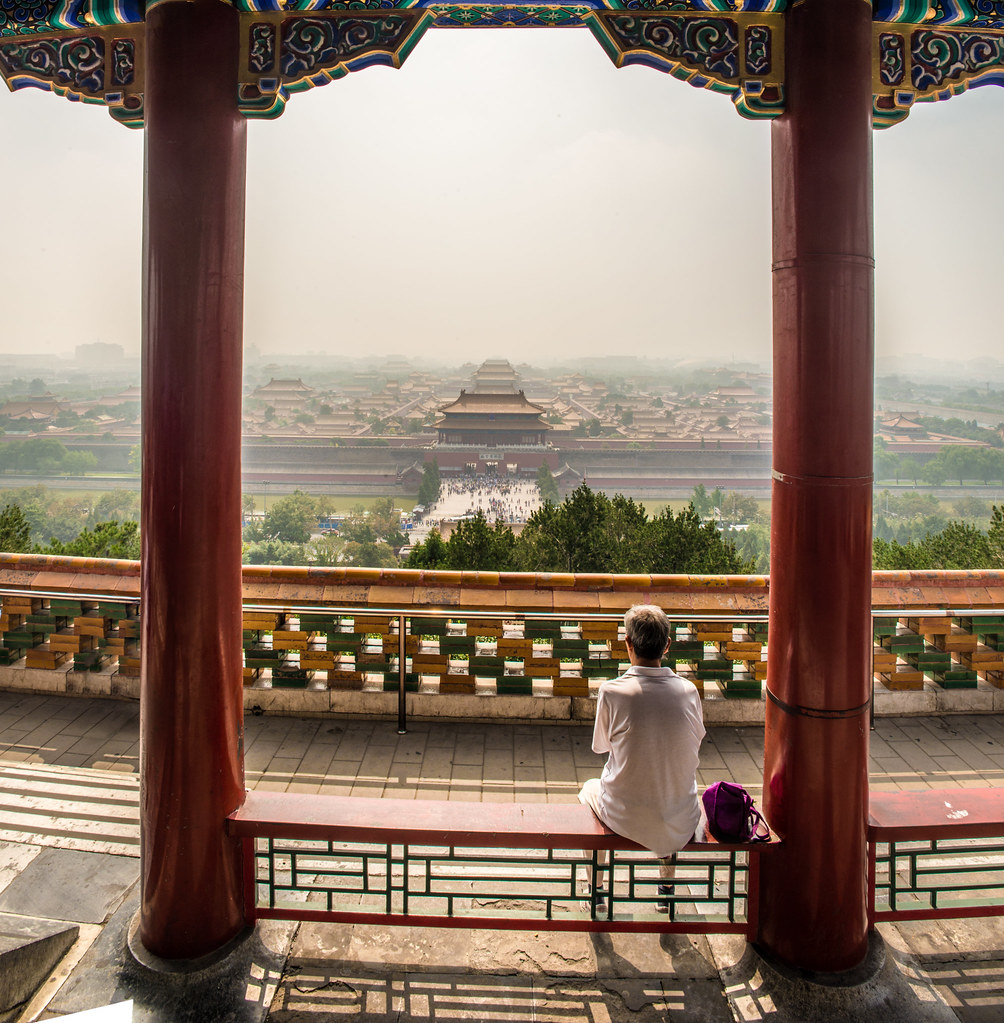
To truly appreciate Jingshan, you must understand its past. This is not just a random hill. It was created by human hands for a profound purpose. Its history is deeply entwined with the rise and fall of dynasties.
From Imperial Garden to Public Park
Jingshan has a long history, dating back almost a thousand years. During the Liao and Jin dynasties, it was an imperial garden. However, the hill you see today was built in the 15th century during the Ming Dynasty. When Emperor Yongle constructed the Forbidden City, a massive amount of earth was excavated to create the palace moat. This earth was piled up just north of the palace to create “Jingshan,” or “Prospect Hill.”
It served several purposes. It acted as an imperial garden, a place for emperors to enjoy the landscape. It also functioned as a protective screen for the Forbidden City, adhering to ancient principles of feng shui.
The Center of Old Beijing
In traditional Chinese city planning, feng shui was paramount. A city, especially an imperial capital, needed a strong central axis. It also needed protection from evil spirits and harsh northern winds. Jingshan Hill was designed to fulfill this role. It sits directly on the central north-south axis of old Beijing. This axis runs from the Bell and Drum Towers in the north, through Jingshan, through the Forbidden City, and all the way to the former Yongding Gate in the south.
The hill was considered a guardian, shielding the palace from malevolent influences. Its central position anchored the entire imperial city. Standing at the top, you can feel this incredible sense of alignment and cosmic order.
The Tragic End of a Dynasty
Jingshan Park holds one of the most dramatic stories in Chinese history. It is the site where the Ming Dynasty came to its tragic end. In 1644, a rebel army led by Li Zicheng breached the walls of Beijing. The Chongzhen Emperor, the last ruler of the Ming, knew all was lost.
He fled the Forbidden City, climbing Jingshan Hill in despair. Overwhelmed by the fall of his empire, he took his own life. He hung himself from a scholar tree on the eastern slope of the hill. It was a somber end to a dynasty that had ruled China for 276 years. This single event makes a visit to the park a deeply moving historical pilgrimage. You are standing on the very ground where an empire fell.
What to See and Do: A Guided Walk Through Jingshan Park
While the main goal is the summit, the park has several other points of interest. Let’s take a walk through the park together, just as our guides would show you. We recommend entering through the South Gate, directly opposite the Forbidden City’s exit.
The Climb to Wanchun Pavilion (万春亭)
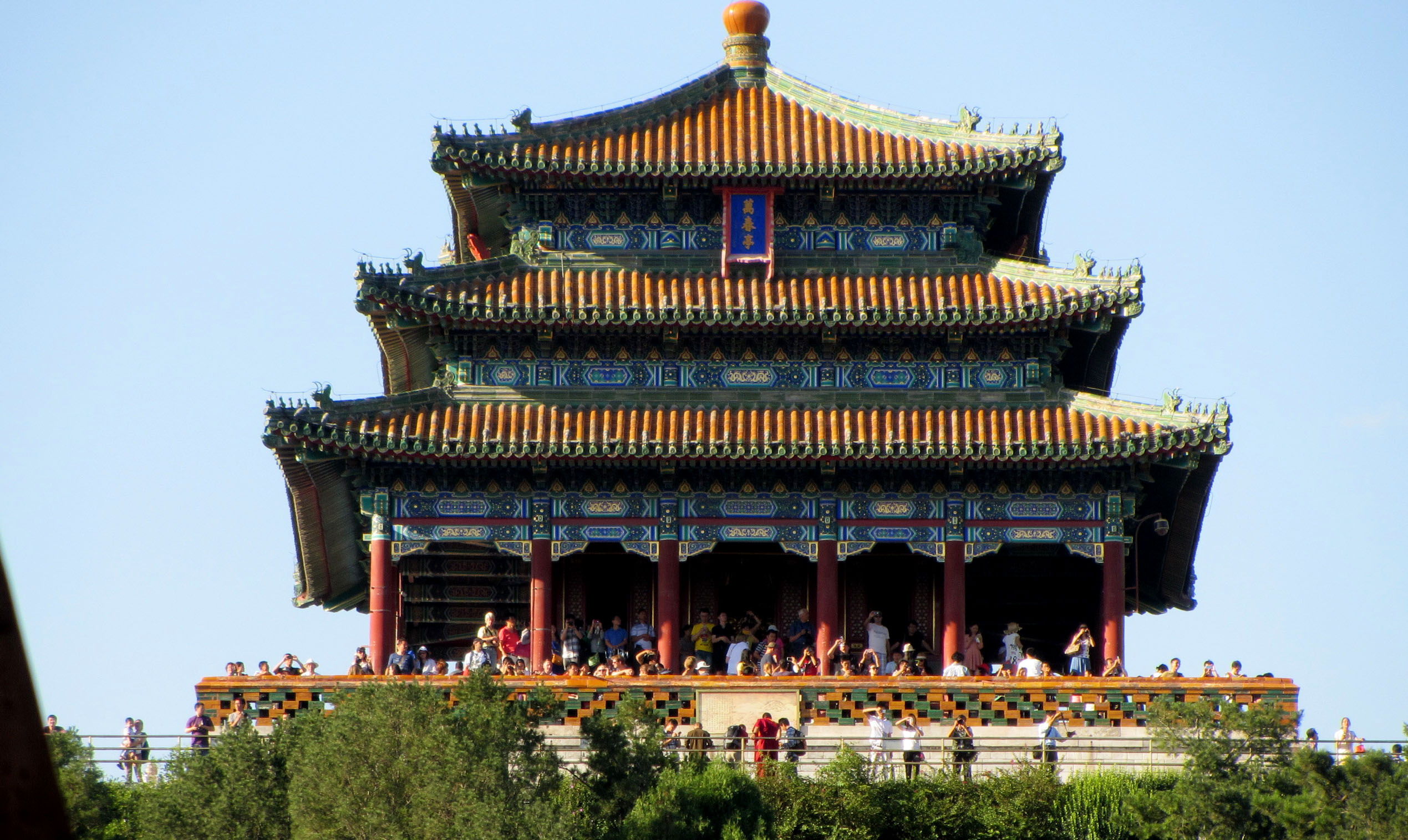
This is the main event. From the south entrance, the path to the top is clear. It’s a paved, winding path with stairs. It’s not a strenuous mountain hike, but a pleasant 10-minute climb.
The Ascent
As you climb, you’ll be surrounded by old cypress and pine trees. Many are several hundred years old. Take your time. Notice the quiet atmosphere compared to the bustling city outside. The anticipation builds with every step. You will pass several smaller pavilions on your way up. They create a beautiful, classic Chinese garden aesthetic.
The 360-Degree Panorama
You reach the top and arrive at Wanchun Pavilion (Pavilion of Ten Thousand Springs). This is the highest point on Beijing’s central axis. The view is simply astonishing.
- To the South: The iconic view. The entire Forbidden City is laid out before you. You can trace its axis, count the courtyards, and see the Gate of Divine Might directly below. On a clear day, you can see Tiananmen Square and beyond.
- To the North: You can see the Bell Tower and the Drum Tower. These two structures were the official timekeepers of imperial Beijing. Beyond them, you can see the modern city stretching towards the northern mountains.
- To the West: The beautiful white dagoba of Beihai Park rises above a serene lake. It’s another iconic Beijing landmark. This view is especially lovely in the late afternoon light.
- To the East: You see the rooftops of traditional hutong neighborhoods blending with the modern skyscrapers of the central business district. It’s a perfect illustration of Beijing’s past and present.
Our Photography Tip: Don’t just stay in one spot. Walk around the entire platform of Wanchun Pavilion. The changing light and angles offer different compositions. A wide-angle lens is great for the Forbidden City, but a zoom lens can help you pick out details like the Drum Tower or the White Pagoda.
The Four Other Pavilions
Wanchun Pavilion is one of five on the hill. The other four are symmetrically placed on the east and west slopes. They are Guanmiao Pavilion (观妙亭), Zhoushang Pavilion (周赏亭), Fulan Pavilion (富览亭), and Jifang Pavilion (辑芳亭). Originally, each housed a unique bronze Buddha statue. Unfortunately, the originals were looted by the Allied Forces in 1900. The current statues are modern replicas, but the pavilions themselves are beautiful examples of Qing Dynasty architecture.
The Scholar Tree of a Fallen Emperor
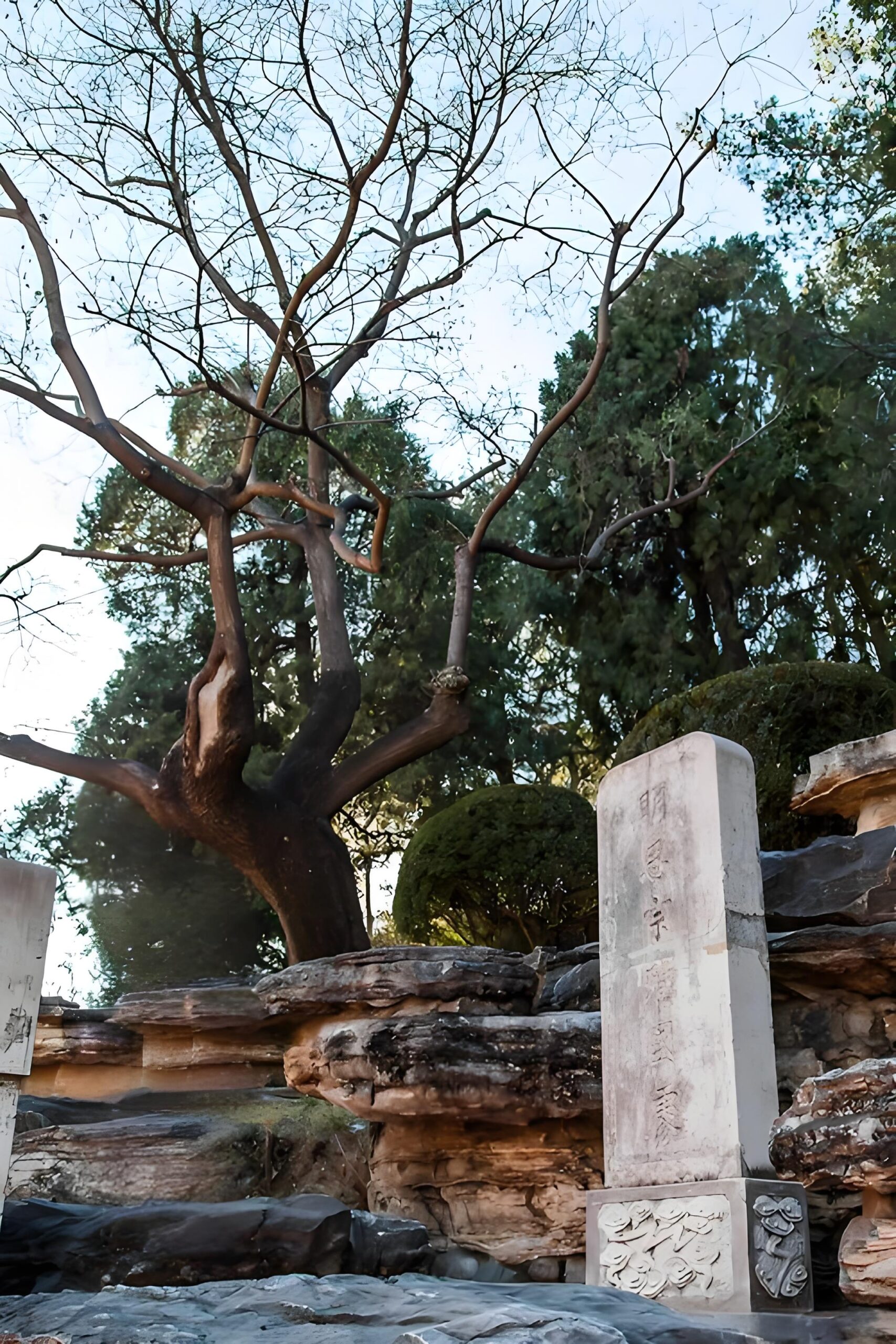
After you descend from the summit, head towards the east side of the park. Here you will find one of its most historically significant spots. A simple sign marks the place where the Chongzhen Emperor ended his life.
Finding the Spot
Follow the signs for the “槐树” (Huái shù – Scholar Tree). It is located near the park’s eastern gate. The atmosphere here is noticeably more somber.
A Moment of Reflection
It’s important to know that the original tree is no longer there. The first tree was reportedly cut down during the chaotic Cultural Revolution. The current tree was planted as a memorial. Despite this, it remains a powerful place. It serves as a stark reminder of the immense pressures of power and the cyclical nature of dynasties. We often ask our guests to pause here for a moment of quiet reflection.
Qiwang Tower (绮望楼)
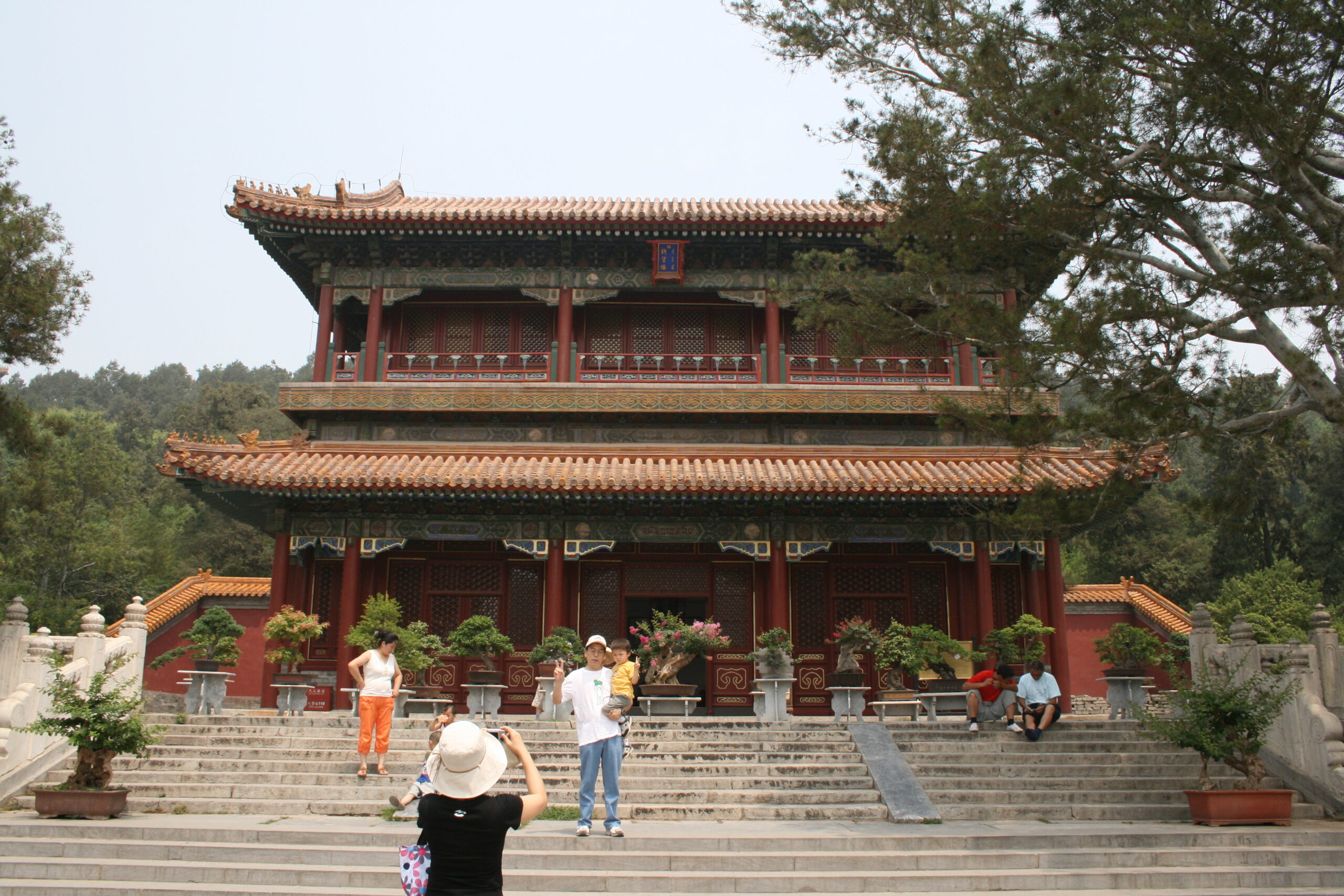
Located just inside the South Gate, Qiwang Tower is a beautiful hall you’ll see upon entering. It was once a place where the imperial family enshrined memorial tablets for Confucius and his disciples. It’s a fine example of palace architecture and sets the stage for the imperial theme of the park.
Shouhuang Hall (寿皇殿)
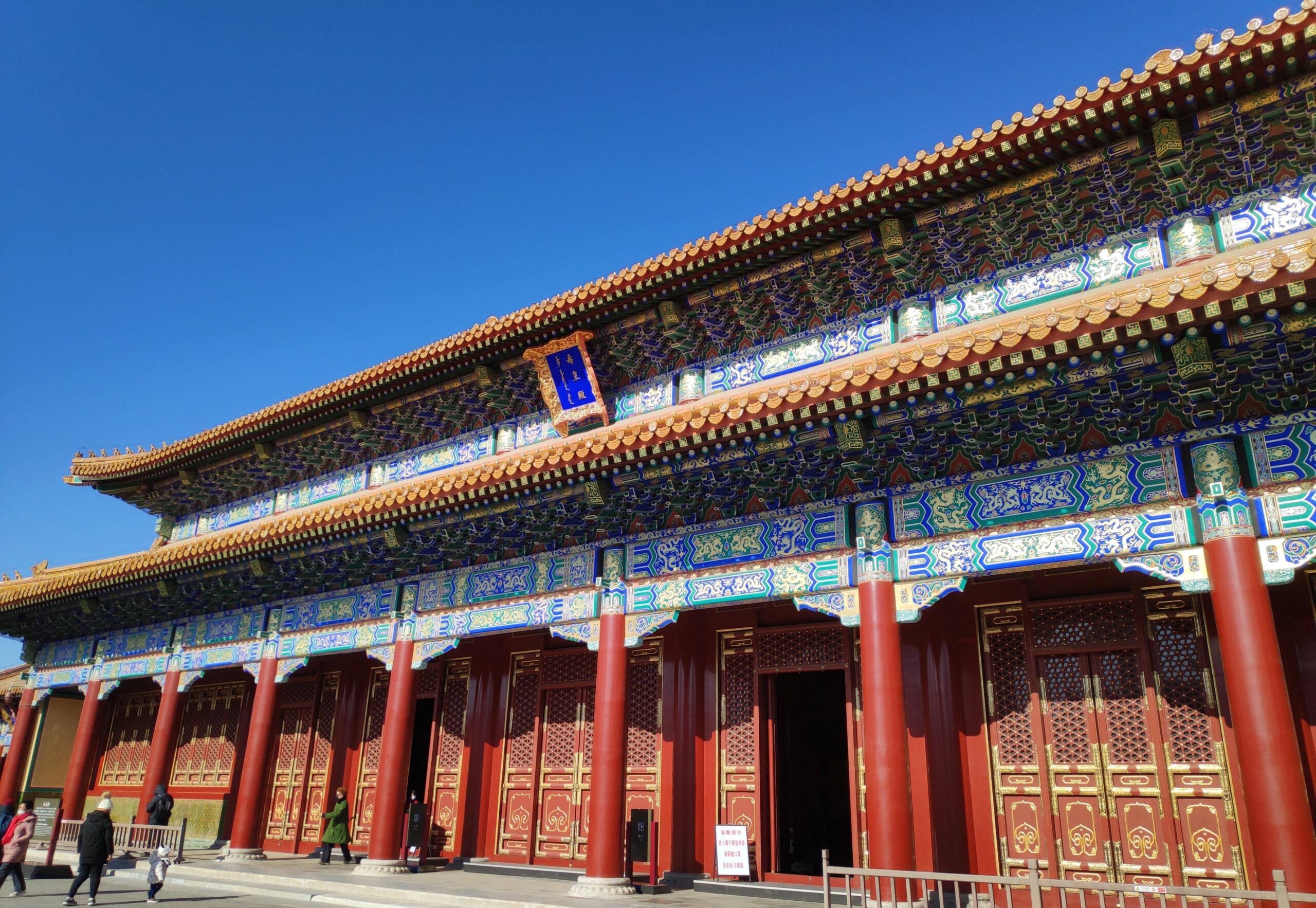
In the northern part of the park lies the Shouhuang Hall complex (Hall of Imperial Longevity). This was the second-largest architectural complex on Beijing’s central axis, after the Forbidden City itself. It was used by Qing emperors to honor their ancestors. For many years, this complex served as the Beijing Children’s Palace. After a major renovation, it reopened to the public in 2018. It now hosts exhibitions, offering deeper insights into the park’s history and Beijing’s culture. It’s well worth the short walk to the park’s northern section.
A Living Park: Experiencing Local Culture
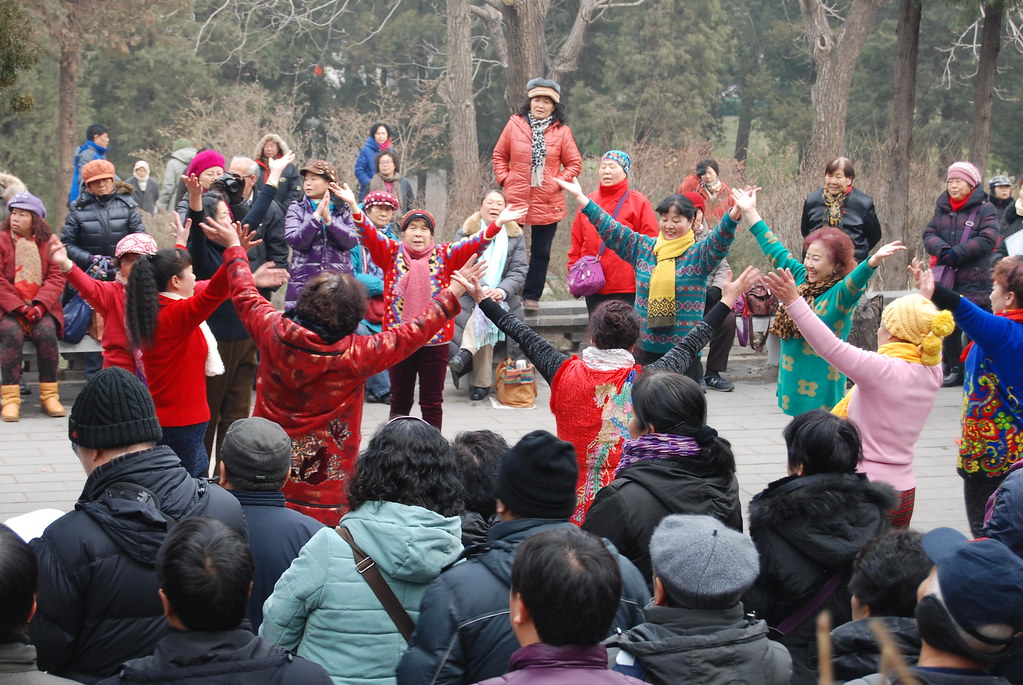
One of our favorite things about Jingshan Park is that it isn’t just a historical relic. It is a vibrant hub of community life. To really experience the park, you need to observe the people who use it every day.
The Morning Choirs
If you visit in the morning, you will likely hear them before you see them. Large groups of retirees gather, often with an accordionist or a conductor, to sing together. Their repertoire usually consists of patriotic songs and old folk tunes. The passion and camaraderie are infectious. It’s a uniquely Chinese cultural experience that many tourists miss.
Dancing, Kites, and Calligraphy
Find a shady plaza within the park, and you will discover a world of activity. Couples practice ballroom dancing. Groups perform synchronized routines with fans or swords. Individuals practice diabolo (Chinese yo-yo). On the park’s open grounds, you’ll see people practicing “water calligraphy,” writing beautiful characters on the stone paths that evaporate in minutes. These are the simple joys of daily life in Beijing, and Jingshan is one of the best places to witness them.
The Peony Garden
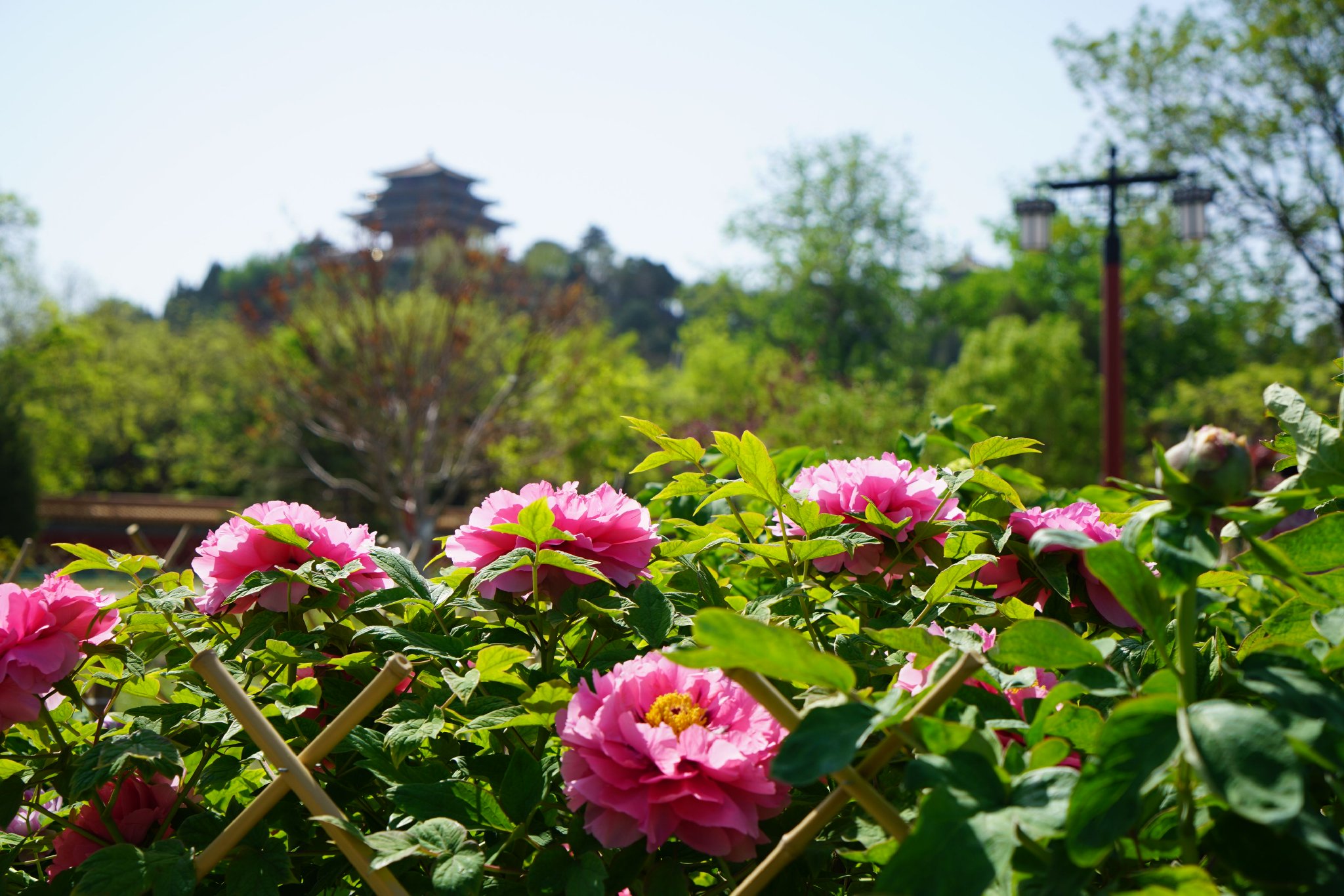
Jingshan Park is famous for its peonies, a flower beloved in Chinese culture. In late April and early May, the park’s peony garden explodes in a riot of color. There are hundreds of varieties, some of which are very rare. If your visit coincides with the peony blooming season, the park hosts a festival. It draws large crowds of flower enthusiasts and photographers. The beauty of the flowers, with the ancient pavilions as a backdrop, is truly special.
Our Signature Experience: Beyond the Viewpoint
Many visitors rush to the top, take a photo, and leave. We encourage a different approach. Here’s a route our guides often recommend for a more complete experience:
- Enter from the East Gate: This allows you to start with the historical narrative.
- Visit the Chongzhen Emperor’s Tree: Begin your tour at this somber, reflective spot. It provides historical context before you see the imperial glory from above.
- Explore the Local Activities: Wander through the eastern and northern sections of the park. Listen to the choirs. Watch the dancers. This gives you a feel for the park’s living culture.
- Climb to Wanchun Pavilion in the Late Afternoon: Time your ascent for the “golden hour,” about an hour before sunset. The light will be soft and warm, making the Forbidden City’s roofs glow.
- Descend and Exit from the South Gate: After soaking in the sunset view, make your way down the main path. You’ll exit directly across from the Forbidden City’s Gate of Divine Might, completing your imperial journey.
We once had a guest, an amateur historian, who followed this route. He later told us, “Starting with the story of the fallen emperor and ending with the magnificent view of his palace at sunset… it was pure storytelling. I felt the entire rise and fall of the dynasty in one afternoon.” This is the kind of meaningful experience we strive to create.
Planning Your Visit to Jingshan Park
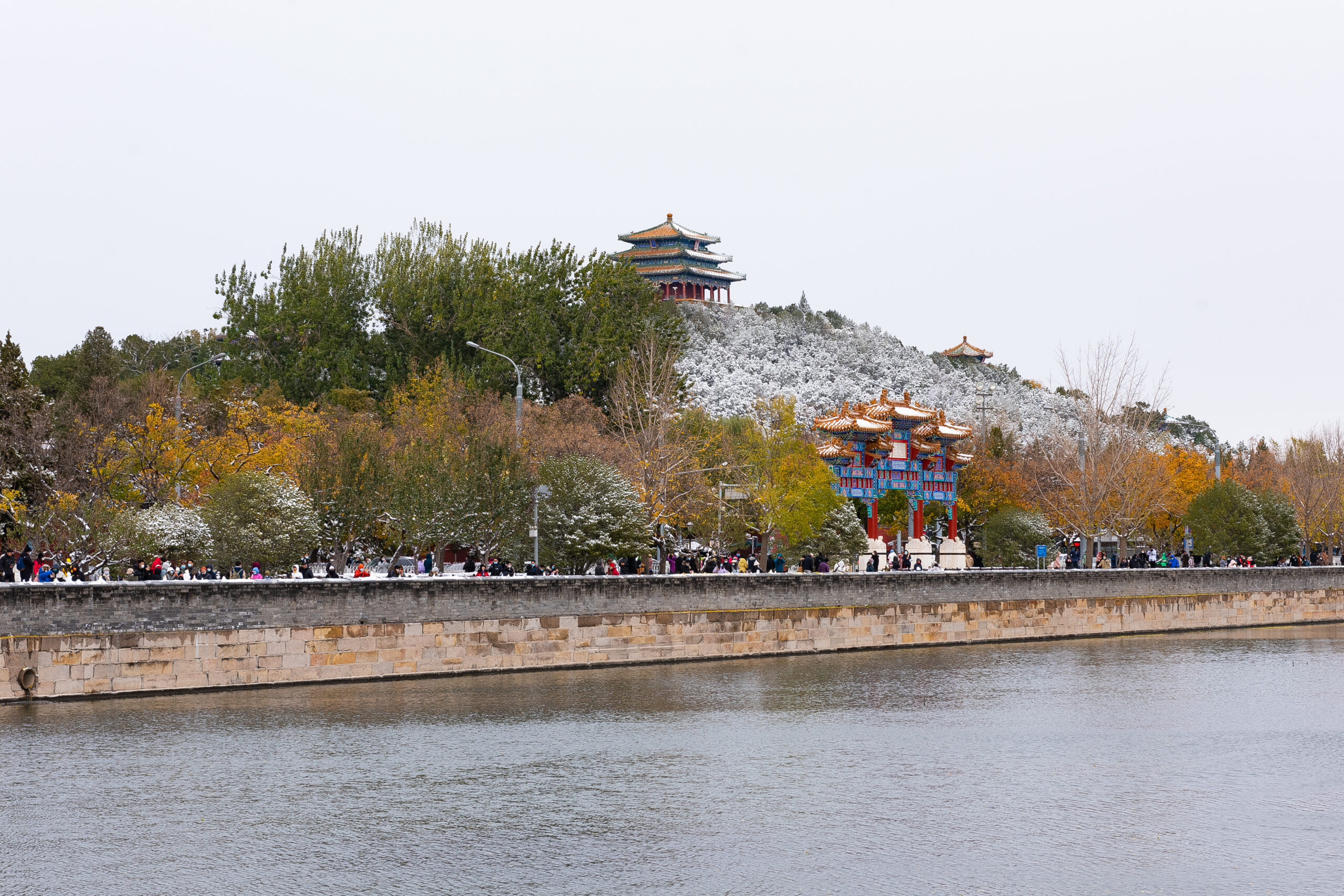
Now for the practical details. Planning your visit is straightforward. Here’s everything you need to know.
How to Get to Jingshan Park
The park has three main gates: South, East, and West. The South Gate is the most popular, especially for those coming from the Forbidden City.
By Subway
Beijing’s subway is efficient and easy to use.
- Line 8 to Shichahai (什刹海) Station: Take Exit C. Walk south for about 10-15 minutes to reach the park’s North Gate.
- Line 8 to National Art Museum (中国美术馆) Station: Take Exit A. Walk west for about 15-20 minutes to reach the park’s East Gate.
By Bus
Several public buses stop directly at the park’s gates. This is a very convenient option.
- Jingshan East Gate Stop (景山东门): Bus routes 111, 124.
- Jingshan West Gate Stop (景山西门): Bus routes 5, 58.
- Jingshan Back Gate Stop (景山后街): Bus routes 5, 58.
By Taxi/Ride-hailing
This is the most direct option. Simply show the driver the name in Chinese: 景山公园 (Jǐngshān Gōngyuán). Be sure to specify which gate you want: South Gate (南门), East Gate (东门), or West Gate (西门).
After the Forbidden City
This is the most common way visitors arrive. It’s incredibly simple. When you finish your Forbidden City tour, you will exit from the North Gate (Gate of Divine Might, or Shenwu Men). Look directly across the street. You will see the grand entrance to Jingshan Park’s South Gate. Cross at the designated crosswalk and you are there.
Opening Hours and Ticket Information
Park information can change, but the details below are current as of our latest check in December 2025.
Category | Details |
|---|---|
Peak Season Hours | April 1 to October 31: 6:00 AM – 9:00 PM. Last ticket sale at 8:30 PM. |
Off-Peak Season Hours | November 1 to March 31: 6:30 AM – 8:00 PM. Last ticket sale at 7:30 PM. |
Regular Ticket Price | ¥2 RMB per person. |
Special Event Price | During the Peony Festival (late April to May), the price may increase to ¥10 RMB. |
Ticket Purchase | Tickets can be bought at the ticket windows at each gate. Our Expert Tip: To avoid lines, especially on holidays, we strongly recommend booking in advance through the park’s official WeChat Mini Program. Search for “景山公园” on WeChat. |
Best Time to Visit Jingshan Park
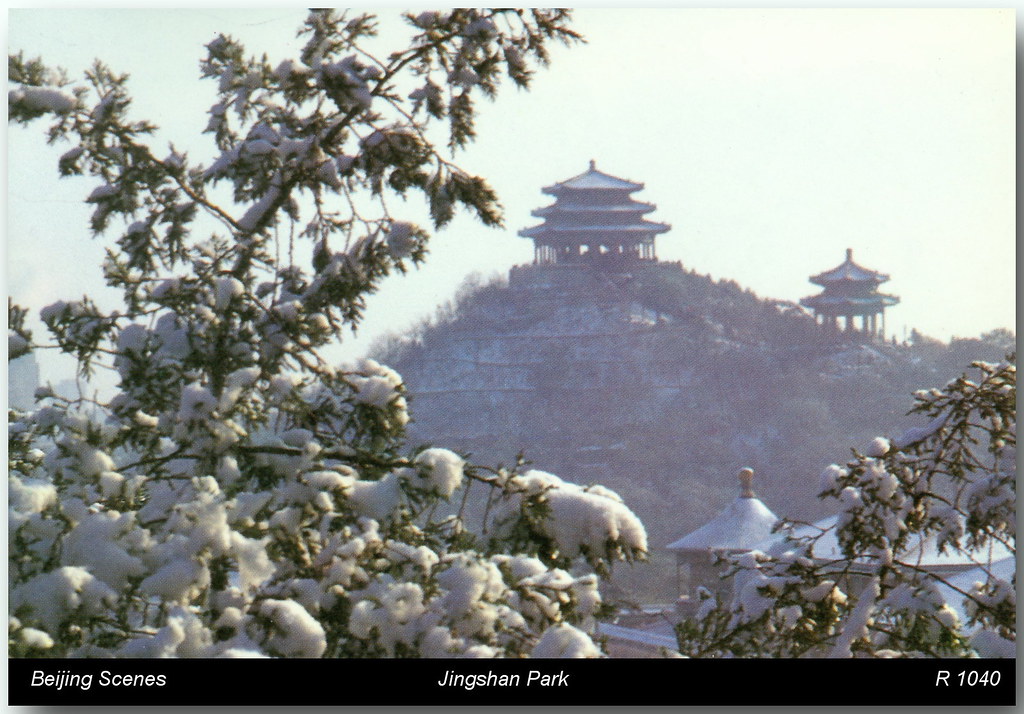
Timing can make a big difference in your experience. Here are our recommendations based on the time of day and year.
Best Time of Day
- Sunrise: For the dedicated photographer. You’ll share the park with locals doing their morning exercises. The light can be beautiful, and the crowds are minimal.
- Late Afternoon / Sunset: The “golden hour.” This is the most popular time for a reason. The setting sun casts a warm glow over the Forbidden City, creating a magical, postcard-perfect scene. Be prepared for crowds at the summit.
- Midday: The light can be harsh for photography. However, it’s a great time to see the park’s local life in full swing.
Best Time of Year
- Autumn (September – October): This is arguably the best time. The weather is cool and comfortable. The skies are often clear and blue, offering the best visibility for that famous view.
- Spring (April – May): A beautiful time to visit. The weather is pleasant, and you have the added bonus of the Peony Festival. The park is vibrant with flowers and visitors.
- Winter (December – February): The cold keeps the crowds away. The bare trees can create a starkly beautiful landscape. If you are lucky enough to visit after a snowfall, the view of a snow-covered Forbidden City is an unforgettable, rare treat.
- Summer (June – August): Beijing can be very hot and humid. Haze or smog can sometimes obscure the view. If you visit in summer, we recommend going early in the morning or late in the afternoon to avoid the heat.
Expert Tips for Your Jingshan Park Trip
Here are a few final tips from our team to make your visit smooth and enjoyable.
- Wear comfortable shoes. While the climb is short, it involves stairs.
- Bring water. Especially in the warmer months, you’ll want to stay hydrated.
- Check the AQI. Before you go, check the Air Quality Index (AQI) for Beijing. The quality of your view depends entirely on having a clear day.
- Separate tickets. Your Forbidden City ticket does not include entry to Jingshan Park. You must buy a separate ticket.
- Bring your own tissues. Public restrooms are available, but like many in China, they may not have toilet paper.
- Be patient at the top. Wanchun Pavilion can get very crowded. Don’t worry. People are constantly moving. Wait patiently for a spot to open up at the railing for your photo.
- Drones are forbidden. Flying a drone here is strictly illegal due to the park’s central location.
Real Traveler Reviews (Curated by Us)
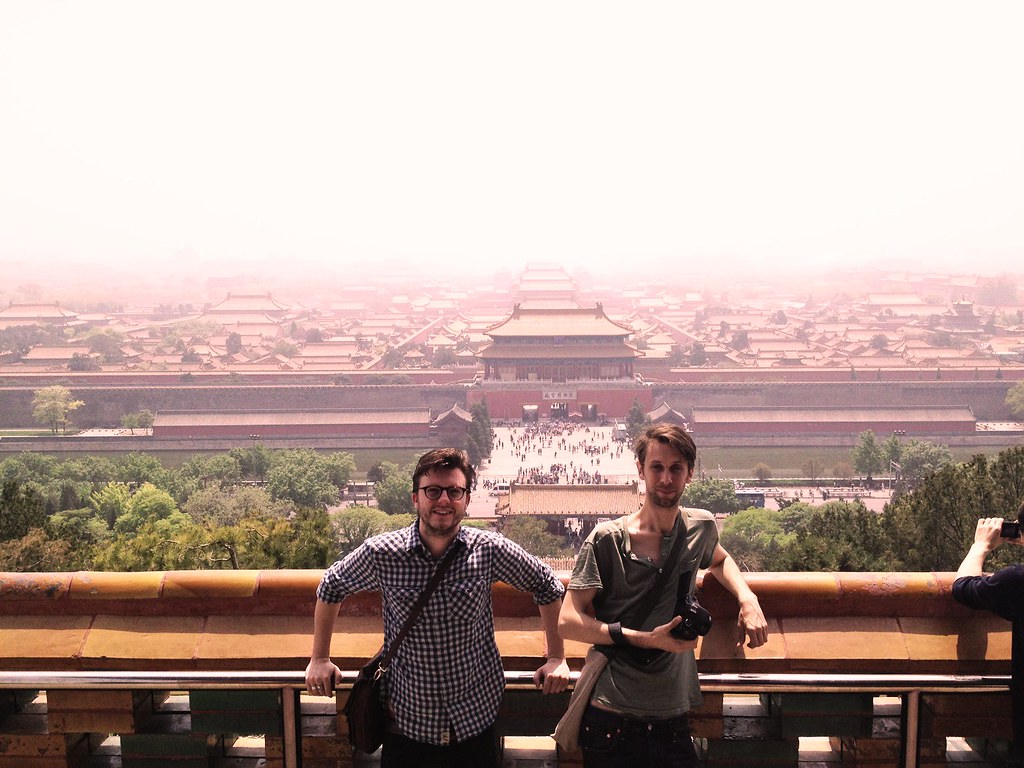
We love hearing from our guests after their trips. Here are a couple of comments that capture the essence of the Jingshan Park experience.
“I almost skipped Jingshan Park after a long day in the Forbidden City. I’m so glad my guide, Li, insisted. Standing up there, watching the sun set over the golden roofs… that was the single best photo and my favorite memory from Beijing. Absolutely breathtaking.” – John, from the UK
“We visited on a Sunday morning. The viewpoint was amazing, but what I really loved was the atmosphere. Seeing hundreds of older people singing together with such joy was more memorable than any temple. It felt so authentic and alive.” – Maria, from Brazil
Frequently Asked Questions (FAQ)
How long does it take to climb to the top of Jingshan Park?
The climb itself is quite short. For a person of average fitness, it takes about 10 to 15 minutes to walk from the South Gate to Wanchun Pavilion at the top.
Is Jingshan Park included in the Forbidden City ticket?
No, it is not. You must purchase a separate ticket for Jingshan Park. The cost is very low, typically just ¥2 RMB.
Is Jingshan Park wheelchair accessible?
The main pathways on the ground level are generally flat and accessible. However, the main attraction, the hill and its pavilions, is not wheelchair accessible as it requires climbing stairs.
Can I fly a drone in Jingshan Park?
Absolutely not. The park is in a highly sensitive central area of Beijing. Flying drones is strictly prohibited and enforced.
What does “Jingshan” (景山) mean?
“Jǐngshān” translates to “Prospect Hill” or “View Hill,” a very fitting name for a place with such a magnificent view.
Is there food and drink available inside the park?
Yes, there are small kiosks and vendors inside the park selling drinks, ice cream, and light snacks.
A Personal Note from Our Team
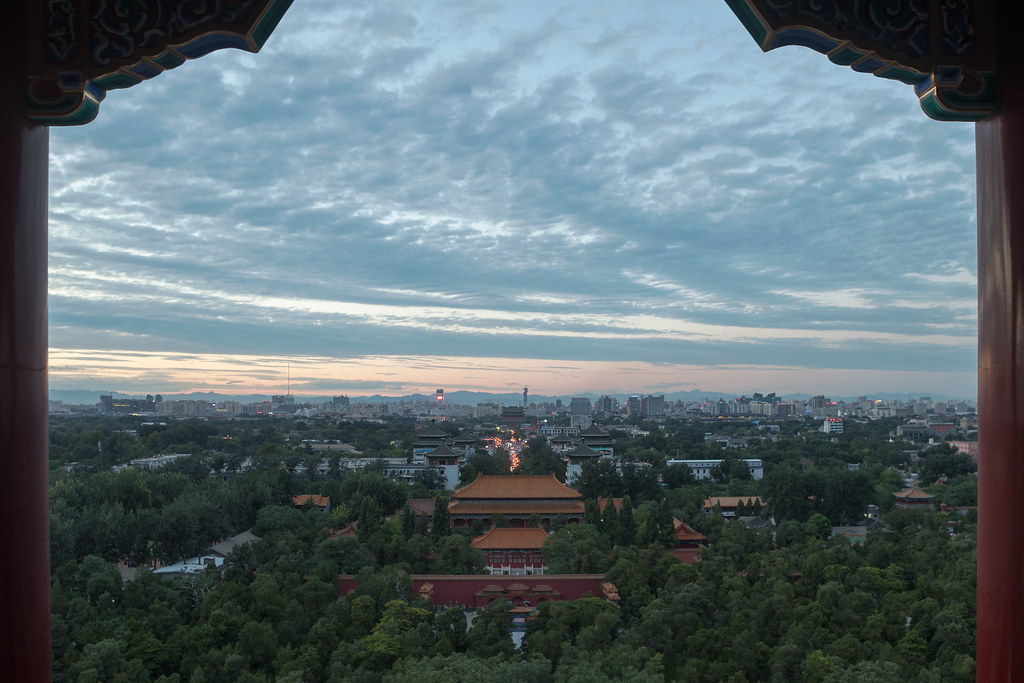
For us at Travel China With Me, Jingshan Park is more than just another scenic spot. It’s a place of perspective. It’s where the overwhelming scale of the Forbidden City becomes clear. It’s where the dramatic arc of Chinese history feels tangible. And it’s where you can pause to see modern Beijing’s daily rhythm unfold in a beautiful, ancient setting.
It’s a small park that packs a powerful punch. Whether you’re exploring on your own with this guide or joining one of our curated Beijing tours, we hope you find a moment of wonder at the top of that hill.
Should you have any more questions, please reach out. We are always here to help you travel China with confidence and create memories that will last a lifetime.


